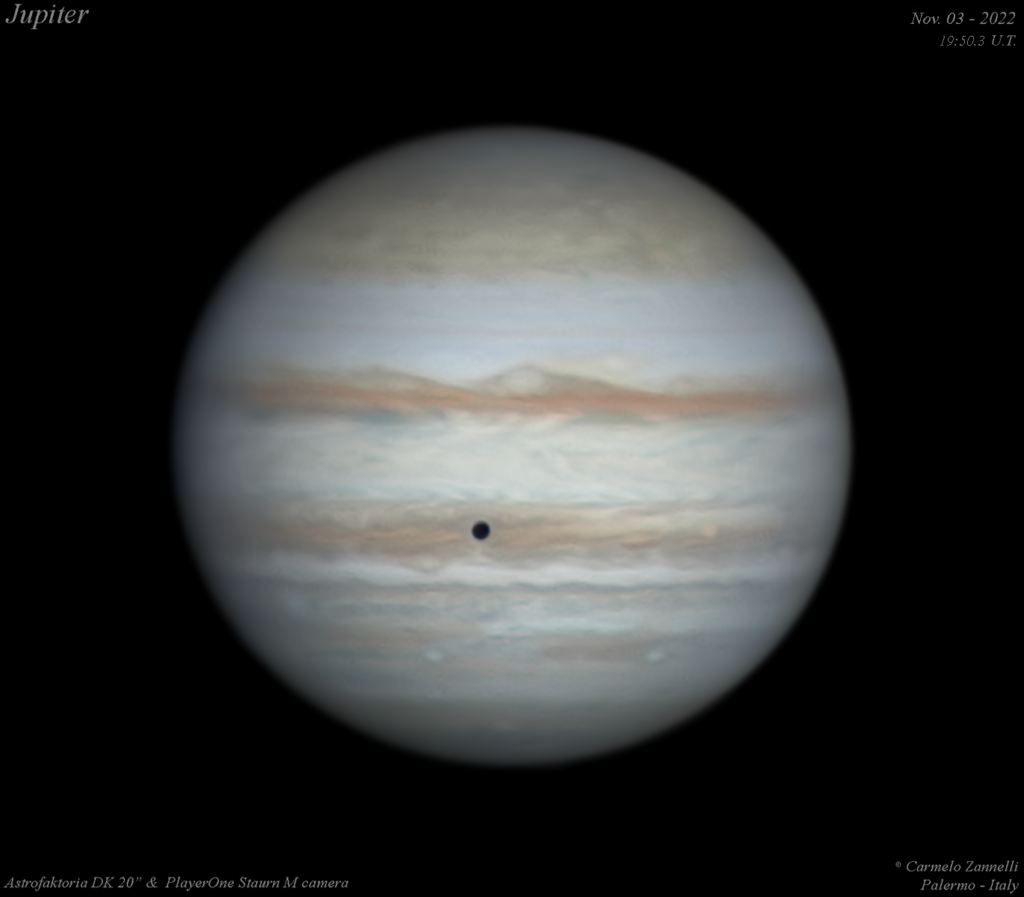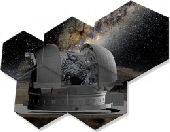Italiano:
La sera del 03 Novembre 2022, ho effettuato un test sul mio telescopio Dall-Kirkham da 51 cm. , dopo aver eseguito dei lavori di ricollocazione e ricollimazione dello specchio secondario affetto, dopo due anni di fermo, da astigmatismo dovuto a tensionamento del materiale vetroso di cui è composto a causa di essicazione ed irrigidimento dei punti di ancoraggio alla sua cella in cui era collocato. La causa è anche abbastanza normale, considerate le escursioni termiche a cui è soggetto tutto il telescopio collocato dentro la sua cupola, che variano di quasi 50 gradi Celsius del caldo africano d’estate fino al freddo d’inverno.
Ho eseguito, quindi, dopo la precisa ricollocazione nella sua cella e la collimazione, un test di ripresa sulla Luna e poi su Giove.
L’immagine di Giove che Vi presento, pur affetta da turbolenza atmosferica dei venti in alta quota (il “famigerato “seeing”), tuttavia fa ben sperare per le future riprese poiché molti dettagli, benché sfocati dal seeing mediocre, sono presenti abbastanza evidenti.
In questa particolare ripresa potete vedere, nettissima, l’ombra del satellite ” Io ” che passa quasi al meridiano centrale di Giove, mentre lo stesso satellite è quasi “camuffato” in mezzo alla Banda Equatoriale Sud (SEB o South Equatorial Belt) più a destra, a circa mezza strada dal bordo del pianeta.
Dettagli tecnici:
Telescopio Astrofaktoria DK20″ @ ~ F/12 – Player One Saturn M camera – Baader-Zeiss Abbe Barlow 2x – Baader RGB filters – Seeing ~ 5,5/10 in R band – sito: Palermo @ my personal Observatory.
*************************************************************************************************************************
English:
On the evening of November 03, 2022, I performed a test on my 51cm. (or 20″) Dall-Kirkham telescope, after having carried out the work of relocation and recollimation of the secondary mirror affected, after two years of inactivity, by astigmatism due to tensioning of the vitreous material of which it is composed due to drying and stiffening of the anchor points to its cell in which it was placed.
The cause is also quite normal, considering the temperature variations to which the entire telescope placed inside its dome is subject, which vary by almost 50 degrees Celsius from African heat in summer to the cold in winter.
After the precise repositioning in its cell and the collimation, I have done a shooting test on the Moon and then on Jupiter.
The result on Jupiter bodes well for future shots as many details, although blurred by poor seeing, are quite evident.
The same satellite is almost “camouflaged” near the middle of the South Equatorial Belt (SEB or South Equatorial Belt) further to the right, about halfway from the edge of the planet.
Technical details:
Astrofaktoria Telescope DK20 “@ ~ F/12 – PlayerOne Saturn M camera – Baader-Zeiss Abbe Barlow 2x – Baader RGB filters – Seeing ~ 5,5/10 in R band – site: Palermo @ my personal Observatory.


